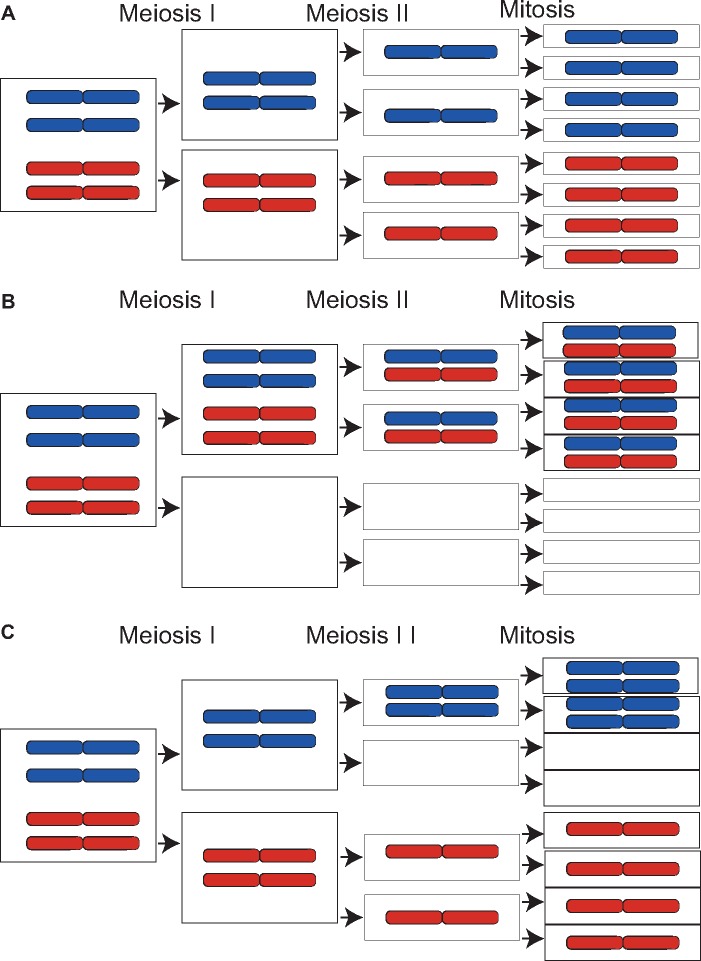Fig. 3.
—Schematic overview of how chromosomal nondisjunction can result in chromosome loss or disomy. (A) During canonical meiosis, the haploid nuclei from the two parents fuse resulting in a single diploid nucleus. Parental chromosomes are shown with distinct colors. Chromosomes go through meiosis I and II, followed by mitosis, resulting in eight haploid ascospores. Chromosome loss or disomy can occur as a result of homologous chromosomes failing to segregate during meiosis I (B), resulting in heterozygous disomy with one chromosome originating from each of the parents. The alternative is the failure of sister chromatid segregation during meiosis II (C), generating homozygous disomic progeny with both copies of the chromosome originating from the same parent.

